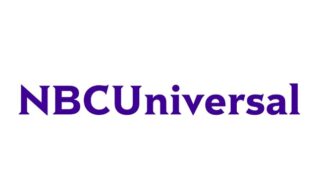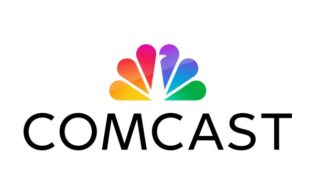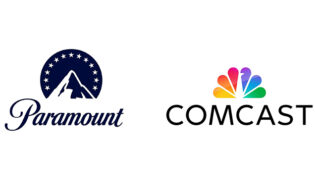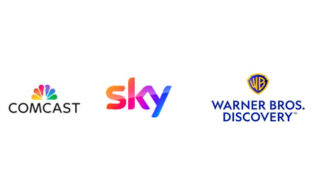Colin Petrie-Norris, senior VP of consumer entertainment for Xfinity at Comcast, on how XUMO is super-serving the booming AVOD market with its lineup of linear channels and an extensive on-demand library.
WS: What is XUMO’s positioning in the AVOD landscape today?
PETRIE-NORRIS: XUMO has a growing international presence, but we are mainly a U.S.-focused company. It is two things. One is a direct-to-consumer free TV application—one of the largest in the U.S.—that includes 220 linear TV channels and 12,000 to 13,000 movies and TV shows. It’s all free to the consumer, no registration required, no sign-ups, no commitments. It’s resonating very well with consumers, particularly as they look for more content to consume. In the last 18 months, as people have been starved for content, services like ours have done well. We are also an enterprise service, where XUMO has taken the engine we’ve built to power other companies’ linear or TV experiences. We assist them with their strategies: Roku Channel, Samsung TV Plus, LG, T-Mobile. We aren’t hitched to a particular studio. Even though we’re part of Comcast, we service a variety of content partners, from small digital brands all the way up to the studios. We present a broad cross-section of content.
WS: In terms of the on-demand library, what’s resonating with your users?
PETRIE-NORRIS: We are a full-fledged TV service. We have 14 genres; we’re going to expand to 22. We do everything from programming for 2- to 5-year-olds to live news, movies and TV shows. We have a daypart audience. In the morning, people want some news; mid-morning it’s health, lifestyle, culture; evening they want to sit down and watch a movie; late-night they want a comedy show. We acquire a broad cross-section of content. We have everyone from young children who are watching kids’ TV all the way up to retirees. They enjoy the value. So we have a broad strategy on content and we service a wide variety of users.
WS: Are you commissioning original content?
PETRIE-NORRIS: That is not something we’re doing at this stage. I was having a conversation recently about the generations of content. Generation one was when we started this service—we would go to the likes of Fail Army or Condé Nast, get short-form content and curate it into linear streams. We’re in generation two now, where those digital providers that started with us are becoming household brands and “traditional” TV companies are leaning into this space. We’re running Hallmark Channel 24 hours a day—that wouldn’t have happened a while ago. Generation three is about differentiating. When we started, we had 3 million users, Pluto had 5 million, and Tubi was an early contender, too. We served our consumers and there was very little overlap. Now, there’s also IMDb TV, Roku Channel, Samsung TV Plus, our own efforts with Comcast Xfinity, Peacock and more. More than half of U.S. consumers are watching free streaming services every month. So yes, we are looking at how we set ourselves apart and what role we play compared to other services. That’s a natural progression in a competitive market. If we all have the same content on rev-share, why would a consumer pick one service over the other? There needs to be differentiation.
WS: What’s the international strategy?
PETRIE-NORRIS: We work with a number of partners, TV set manufacturers, box manufacturers. With our enterprise business, we’re providing services to LG, Samsung, Rakuten and many others. We are licensing content from around the globe and making it available to our partners, helping them build up their free ad-supported TV options in Europe, Latin America and Australia.
WS: For companies starting up their OTT offerings, is AVOD a better entry model now, given how competitive the SVOD landscape has become?
PETRIE-NORRIS: I don’t think it’s one-size-fits-all. When we started, you had reasonable content and some advertiser curiosity about CTV advertising. As we’ve built, and the Plutos and Tubis and everyone else have gotten larger, we’re contributing meaningfully to the bottom line of the content companies. It’s not just an experiment anymore. At an exponential rate, that is elevating the quality of the content and services like our own. It’s driving more interest from consumers—more adoption, more retention, more engagement. And then the advertisers want to come in. To somebody looking into this space, it is rather different from what AVOD was five years ago when it was pre-roll video on YouTube. This is a very good way to engage customers. It’s very easy to start using the service because it’s low risk. The quality of content available is very good. You’ve sat down in front of Netflix and spent 45 minutes scrolling through for something to watch. Not only do you have to decide if it’s Netflix or Disney+ or HBO Max tonight—you have paralysis of which service to use—when you get inside, you’ve got 45 minutes of looking around. With free TV, you’re immediately engaged. You flip to a channel. I didn’t know I was going to watch a documentary on penguins, but here I am; I’m going to watch it for an hour, it’s amazing. It’s TV as a companion. Advertisers like that. Viewers are relaxed; they’re enjoying it. This is why advertisers are interested in it. It’s a very good way to engage with customers; it’s low pressure, instantly engages and is easy to navigate. That’s what is creating the acceleration and adoption of AVOD. Everyone is looking at SVOD—it’s the sexy stuff, it’s the big brands, with marketing dollars being spent on trying to stand out. This lean-back market, which is almost invisible, is the consumer saying, I just want great stuff and I want it tailored to me. That’s growing outside of the main line of sight of everyone in the industry.
WS: I’ve heard that digital video ad sales are moving more to a TV model, where it’s more important to match the brand with the content. Are you finding that to be the case as well?
PETRIE-NORRIS: Yes, we are. The right age ratings of your content matter—you don’t want to have your brand next to something that is risqué for certain audiences. We built our business to service TV manufacturers and advertisers, so we have a very good, advertiser-friendly array of content. That is allowing for traditional TV advertisers to make a natural bridge over. It doesn’t take a lot of imagining to see, oh, this is linear TV, it’s a 30-second ad, I can see how that can work. And many times, advertisers are comfortable using that same contextual approach. I want to be on this PGA Tour channel, or I want to be on your cooking shows. That makes it a nice, easy move. What is seemingly very traditional TV, ad delivery is built on top of a very advanced digital ad platform that can do audience targeting. So it’s bringing in the digital advertisers as well—they like the big-screen, high-impact format. It’s a little bit of the best of both worlds.
WS: How do you use data to inform your content decisions?
PETRIE-NORRIS: The reality is this ecosystem does produce a lot of data. You can look in real-time and see consumer behavior against particular types of content. In the beginning—and this was out of necessity to begin with, but it’s turned into our main value proposition—we couldn’t afford to have hundreds and hundreds of editors hand-curate channels, taking all the thousands of videos somebody would send us and trying to figure out how to put them in order. So, we built an engine we call Elixir that automatically compiles, based on themes or keywords or certain rules, 30-minute blocks of programming and dynamically curates and learns from how people watch content and adapts ad loads. What looks like a traditional block that might have been hand-stitched together is actually derived from an algorithm-based engine, adapted to what’s recent or popular. We do have editors as well; certain types of content need to tell a story, and it can’t be out of sequence. But the point is, data has allowed us to elevate the experience. We aren’t bound by traditional frameworks for television. You can try different strategies. Does a comedy show work straight after news? How many ads do I need to put between a show ending and a new one starting? You can learn, adapt and make the experience better. Every day we look at our overnight data. It’s a process of making the service better and better.
WS: How does usage break down across channels and the on-demand library?
PETRIE-NORRIS: It varies by platform. Some platforms are highly tuned to linear, like some of our smart TV installations. It’s really about channels and the guide and channel surfing. People navigate Fire TV or Roku in a different way, and they might be more inclined to delve into our library of on-demand content. When you’re watching a linear TV channel, if you join halfway through a movie, we can help you go to that movie on-demand. We see a blend. Sometimes it’s skewed to linear; other platforms are more skewed to on-demand. And it depends on the type of genre you’re watching. With cooking shows, you’ll discover the linear channel, but you want to see that recipe from the start and watch it on your terms. It differs by platform and by title.
WS: It feels like there’s a new FAST channel or SVOD service popping up every day.
PETRIE-NORRIS: The TV industry is getting democratized. It used to cost you $100 million to set up a TV channel. You’d need to have a ton of production and licensing. You’d need to get into the five gatekeepers, [the major pay platforms]. You’d have to negotiate your channel space. It was difficult. It was the remit of the giants on both the distribution and the content sides. Today, with free ad-supported TV, we have small companies of five people that run a TV channel and do it amazingly well. Television is getting more accessible—that’s quite exciting.
WS: What are your priorities for XUMO in the next 12 to 18 months?
PETRIE-NORRIS: International expansion continues. We are bringing more partners on board, more regions, more countries. That is a big focus. As we were acquired by Comcast 18 months ago, we’re very involved with a number of major initiatives there. We’re assisting with Peacock. We’re focused on how we can accelerate some of the initiatives and features inside the Comcast family.
We have these four qualities at XUMO: LIFE—Lead, Innovate, Figure it Out and Entertain. You get caught up in the data, but at the end of the day, you’ve got to engage and entertain people. That’s TV personified.





